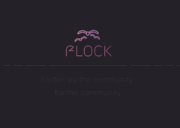
Looking to get better with GWT? Then don’t miss these advanced Google Web Toolkit tips! This robust framework is designed to build web-based applications using the Java programming language. Initially introduced by Google back in 2006, GWT quickly became popular among developers for its features such as the ability to run Java code directly in the browser. Today, GWT has evolved into a powerful platform for building rich web applications with support for advanced features that sets it apart from other web frameworks.
Advantages of GWT
One of the major benefits of GWT is that it provides an extensive development environment and a broad range of functionalities. GWT allows developers to take advantage of advanced features such as Deferred Binding, Cross-Platform Code, and Compiler Optimizer, making it a powerful tool for web development. With these unique features, GWT stands out from other web frameworks and provides developers with the ability to build dynamic web applications with ease.
Recent Enhancements
In recent years, GWT has undergone several significant updates and enhancements to offer even more advanced tools for web development. These enhancements have made the platform even more flexible and easier to integrate with other technologies used in web development, such as server-side integration and performance optimization. Additionally, these updates have addressed issues related to browser compatibility, ensuring that GWT can be used across a wide range of applications.
Google Web Toolkit (GWT) offers an extensive range of functionalities and features that make it one of the most powerful frameworks for web development. The recent enhancements and updates to GWT have further boosted its power and flexibility. It’s a great platform for developers to create dynamic and engaging web applications.
If you want to explore GWT for your next web development project, be sure to check the following advanced tips!
7 Google Web Toolkit Tips
The following are GWT code examples, with simple code to help you understand each concept, of course you will need to adapt them to fit your project’s specific needs!
Use Deferred Binding
Deferred binding allows you to write code that can be compiled into different versions based on runtime conditions. This can be useful for optimizing your application for different browsers or devices. For example, you can write code that is optimized for touch screens or for low-bandwidth connections.
public interface MyWidgetFactory extends ClientBundle {
@Source("MyWidgetIE.css")
MyWidgetStyle ieStyle();
@Source("MyWidget.css")
MyWidgetStyle style();
}
Code language: PHP (php)In this example, the MyWidgetFactory interface uses deferred binding to choose the appropriate CSS file based on the user’s browser.
Use Request Factory
RequestFactory is a powerful feature in GWT that allows you to communicate with the server using Java objects instead of sending and receiving raw data. This can make your code more maintainable and less error-prone.
@Service(value = UserServiceImpl.class)
public interface UserService extends RequestFactory {
Request<UserProxy> getUserById(Long id);
InstanceRequest<UserProxy, Void> persist();
}
Code language: PHP (php)In this example, the UserService interface defines two methods for communicating with the server using Java objects.
Optimize for Speed
GWT applications can be slow to load, especially on mobile devices. To optimize for speed, use code splitting to load only the parts of the application that are necessary for the current page, and minimize the use of large external libraries.
@SplitLayout(vertical = true, size = { 25, 75 })
public class MySplitLayoutPanel extends SplitLayoutPanel {
public MySplitLayoutPanel() {
addNorth(new HeaderPanel(), 30);
add(new ContentPanel());
}
}
Code language: PHP (php)In this C+ example, the MySplitLayoutPanel class uses code splitting to only load the HeaderPanel and ContentPanel as necessary.
Use UiBinder
UiBinder is a templating system that allows you to write your UI code in XML instead of Java. This can make your code more readable and maintainable, and can also make it easier to work with designers who may not be familiar with Java.
<!DOCTYPE ui:UiBinder SYSTEM "http://dl.google.com/gwt/DTD/xhtml.ent">
<ui:UiBinder xmlns:ui="urn:ui:com.google.gwt.uibinder"
xmlns:g="urn:import:com.google.gwt.user.client.ui">
<g:HTMLPanel>
<g:Label>Hello, World!</g:Label>
</g:HTMLPanel>
</ui:UiBinder>
Code language: HTML, XML (xml)In this example, the UiBinder template defines a simple UI with a label.
Use Code Server
Code Server is a feature in GWT that allows you to develop and test your code in real-time without having to compile and deploy the entire application. This can make the development process much faster and more efficient.
public class MyEntryPoint implements EntryPoint {
public void onModuleLoad() {
final Button button = new Button("Click me!");
button.addClickHandler(new ClickHandler() {
public void onClick(ClickEvent event) {
Window.alert("Hello, World!");
}
});
RootPanel.get().add(button);
}
}
Code language: PHP (php)In this example, the MyEntryPoint class uses Code Server to test the button click event in real-time.
Cross-Platform Code
Google Web Toolkit allows developers to write cross-platform code that can be compiled into JavaScript for use on multiple platforms, including desktop and mobile devices. Here’s an example of how cross-platform code works in GWT:
import com.google.gwt.core.client.EntryPoint;
import com.google.gwt.user.client.Window;
public class MyEntryPoint implements EntryPoint {
public void onModuleLoad() {
String userAgent = Window.Navigator.getUserAgent();
if (userAgent.contains("Mobile")) {
Window.alert("This is a mobile device!");
} else {
Window.alert("This is a desktop device!");
}
}
}
Code language: JavaScript (javascript)In this example, the MyEntryPoint class uses the Window.Navigator.getUserAgent() method to detect the user agent string of the current device. If the user agent string contains the word “Mobile”, the code assumes that the device is a mobile device and displays a message. Otherwise, the code assumes that the device is a desktop device and displays a different message.
When this code is compiled using the GWT compiler, it generates JavaScript code that can be executed on both desktop and mobile devices, allowing the same code to run seamlessly across multiple platforms.
Use MVP (Model-View-Presenter)
Model-View-Presenter (MVP) is a design pattern that separates the presentation logic from the business logic in your application. This can make your code more modular and easier to test, and can also make it easier to maintain and update your application over time.
public interface MyView {
void setPresenter(MyPresenter presenter);
void setMessage(String message);
}
public interface MyPresenter {
void onButtonClick();
}
public class MyPresenterImpl implements MyPresenter {
private final MyView view;
public MyPresenterImpl(MyView view) {
this.view = view;
view.setPresenter(this);
}
public void onButtonClick() {
view.setMessage("Button clicked!");
}
}
Code language: PHP (php)In this example, the MyView and MyPresenter interfaces define the contract between the view and presenter, and the MyPresenterImpl class implements the presenter logic.
Conclusions: Go try it yourself!
If you’re new to GWT or web development in general, the Google Web Toolkit tips provided in this article are intended to be simple and easy to understand. However, some of these tips may require more advanced knowledge of GWT and web development. With some experience and understanding of GWT, developers can successfully implement these tips to create more flexible, scalable, and dynamic web applications.
As with any coding project, it’s always a good practice to test and debug the code thoroughly to ensure that it works as intended. With GWT’s support for a broad range of web development features like Cross-Platform Code, Deferred Binding, Compiler Optimizer, and more, developers can take their web applications to the next level.
With the advanced tools and functionalities offered by GWT, developers can effectively build robust web applications that help their businesses stand out from the competition. Try implementing these GWT tips in your next web development project to see how they can transform your web applications for the better!
More articles about web development:
Go full web with Flutter!




